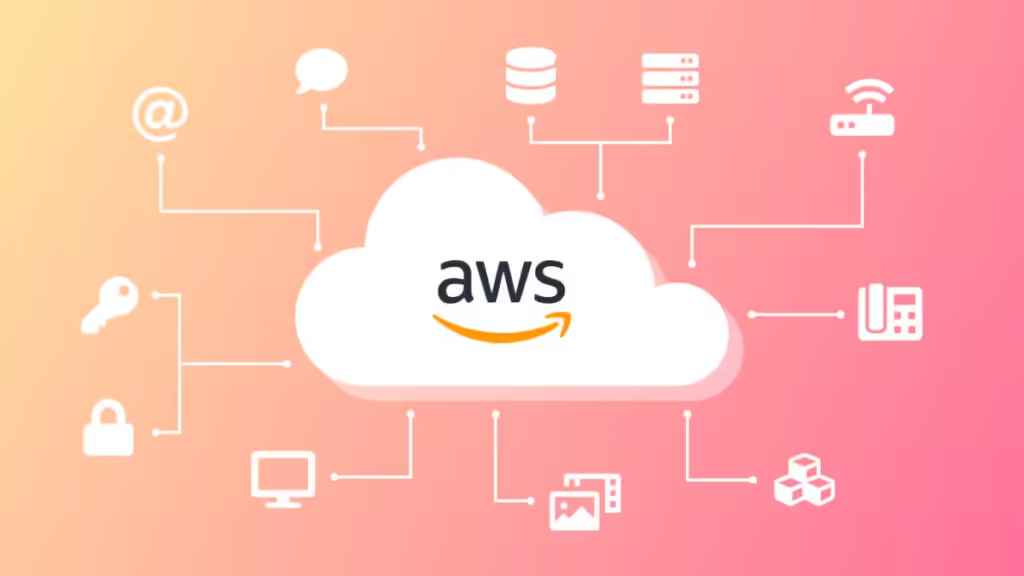🚀 AWS Learning Roadmap: A Step-by-Step Guide

📚 Introduction to AWS
Before diving into specific services, let's understand some fundamental concepts:
1. ☁️ Cloud Computing Basics
– What is Cloud Computing?
– Service Models: IaaS vs PaaS vs SaaS
– Deployment Models: Public vs Private vs Hybrid Cloud
2. 🏗️ AWS Foundations
– Well-Architected Framework
– Shared Responsibility Model
– AWS Global Infrastructure
🎯 Step 1 - Essential Services
These core services form the foundation of your AWS journey:
1. 🔐 IAM (Identity and Access Management)
– Users / User Groups
– Roles
– Policies
– Identity-Based
– Resource-Based
– Instance Profiles
– Assuming Roles
2. 🌐 VPC (Networking Layer)
– Subnets
– Private Subnet
– Public Subnet
– CIDR Blocks
– Route Tables
– Security Groups
– Internet Gateway
– NAT Gateway
3. 💻 EC2 (Compute)
– Instance Types
– CPU Credits
– Purchasing Options
– Keypairs
– Elastic IP
– Storage / Volumes
– Auto-Scaling
– AMIs
– Launch Templates
– User Data Scripts
– Auto-Scaling Groups
– Scaling Policies
– Elastic Load Balancers
4. 📊 CloudWatch
– Metrics
– Events
– Logs
5. 🔄 Route53 (DNS)
– Hosted Zones
– Private
– Public
– Routing Policies
– Healthchecks
6. ⚡ ElastiCache
– Redis/Memcached options
7. 📦 S3 (Storage)
– Buckets / Objects
– Storage Types
– Standard
– S3-IA
– Glacier
– Bucket / Object Lifecycle
8. 📧 SES (Emails)
– Sandbox / Sending Limits
– Identity Verification
– DKIM Setup
– Feedback Handling
– Configuration Sets
– Dedicated IP
– Sender Reputation

🔼 Step 2 - Learn These Next
After mastering the essentials, move on to:
1. 📀 DynamoDB (NoSQL Storage)
– Tables / Items / Attributes
– Primary Keys / Secondary Indexes
– Capacity Settings
– Data Modeling
– Streams
– DynamoDB Local
– Limits
– Backup / Restore
2. 🐳 ECS (Containers)
– ECR
– Clusters / ECS Container Agents
– Tasks Services
– Launch Config / Autoscaling Groups
3. 🗄️ RDS (Managed Databases)
– DB Instances
– Storage Types
– General Purpose
– Provisioned IOPS
– Magnetic
– Backup / Restore
🏔️ Step 3 - Pick These After
🚄 CloudFront (CDN)
– Distributions
– Policies
– Invalidations

☁️ Step 4 - Serverless
1. λ Lambda
– Creating / Invoking Functions
– Layers Custom Runtimes
– Versioning / Aliases
– Event Bridge / Scheduled Execution
– Cold Start and Limitations
– API Gateway
– Lambda@Edge
2. 🐋 Container Services
– ECS Fargate
– EKS (Kubernetes)
💡 Best Practices and Tips
🎯 Focus on Essentials First
AWS offers numerous services, but start with the core services in Step 1 before moving on.
🔨 Learn by Doing
The best way to learn? Make a simple app and use the services listed above for deployment.
📈 Gradual Progression
Follow the steps in order. Each builds upon the knowledge from the previous one.
🎓 Moving Forward
Remember, this roadmap is designed to provide a structured learning path through AWS services. As you progress, you’ll discover many more services and features, but this foundation will serve you well.
Keep learning and keep building! ☁️👩💻👨💻
Note: For the most up-to-date information and detailed documentation, always refer to the official AWS documentation. 📚
Devops Multi cloud Training
Choose the training style that fits your schedule — Self-Paced or Live Interactive Sessions. Both include hands-on projects, expert support, and lifetime access.
| Feature | Self-Paced Training | Live Training |
|---|---|---|
| 🎯 Mode | 🎥Pre-Recorded Session | 🧑🏫Live Class + Recordings |
| 💼 Projects | 🕒 Weekend Real-Time Projects | 📅 Weekdays + Weekend Real-Time Projects |
| ❓ Doubt Clearing | 📞 Weekend Live Support Session | 🧠 Anytime Doubt Clearing Session |
| 👥 Career Support & Mentorship | ❌ No | ✅ Yes |
| 🎓 Global Certification Training | ❌ No | ✅ Yes |
| 🔑 Access | ♾️ Lifetime Access | ♾️ Lifetime Access |
| 💰 Fees | ₹4,999 (2 x ₹2,500) | ₹7,999 (2 x ₹4,000) |
| ℹ️ For More Info | Explore Self-Paced Training | Explore Live Training |

